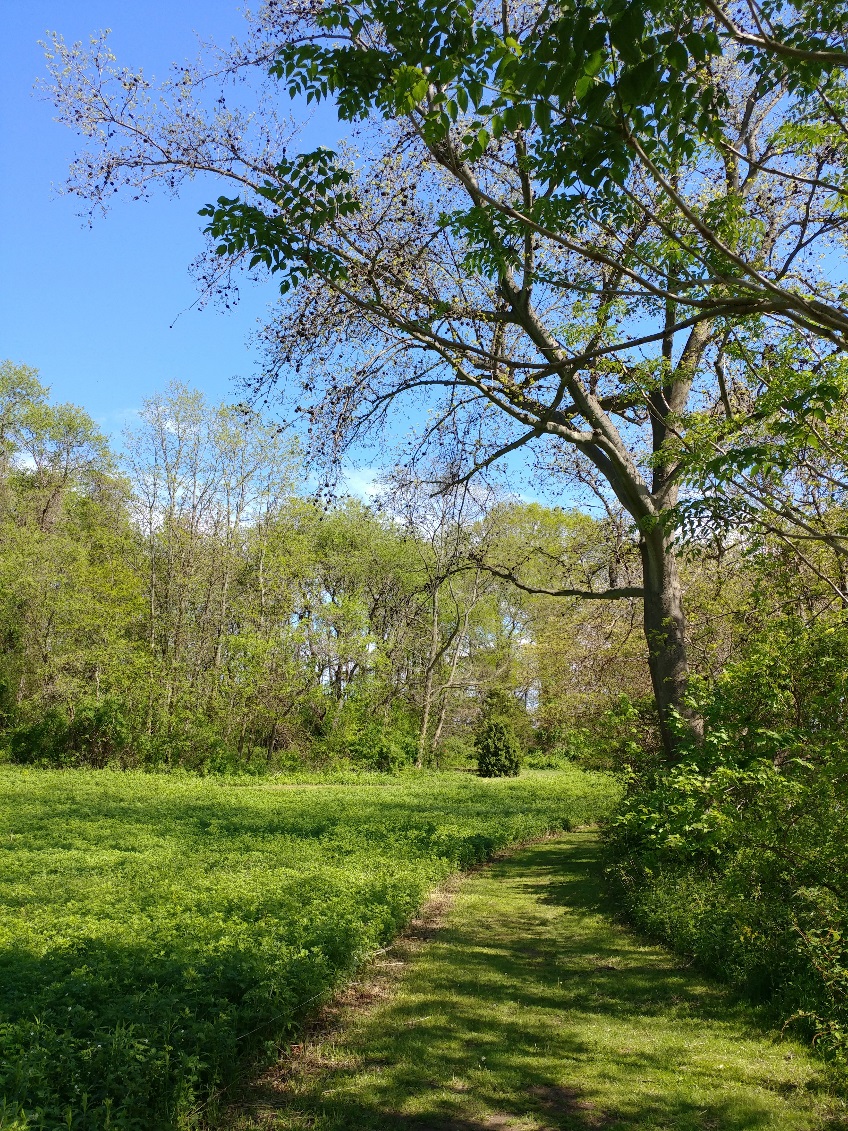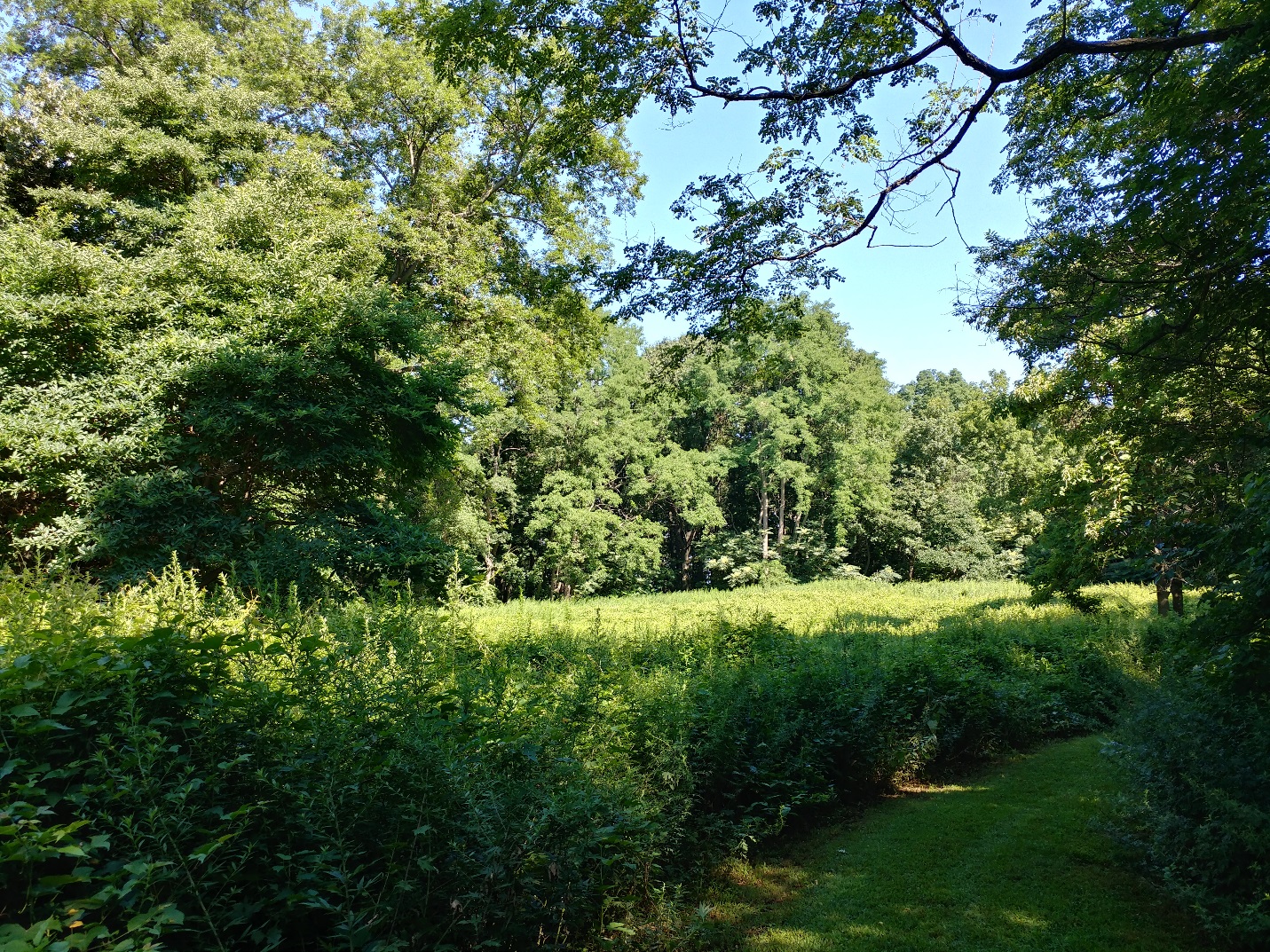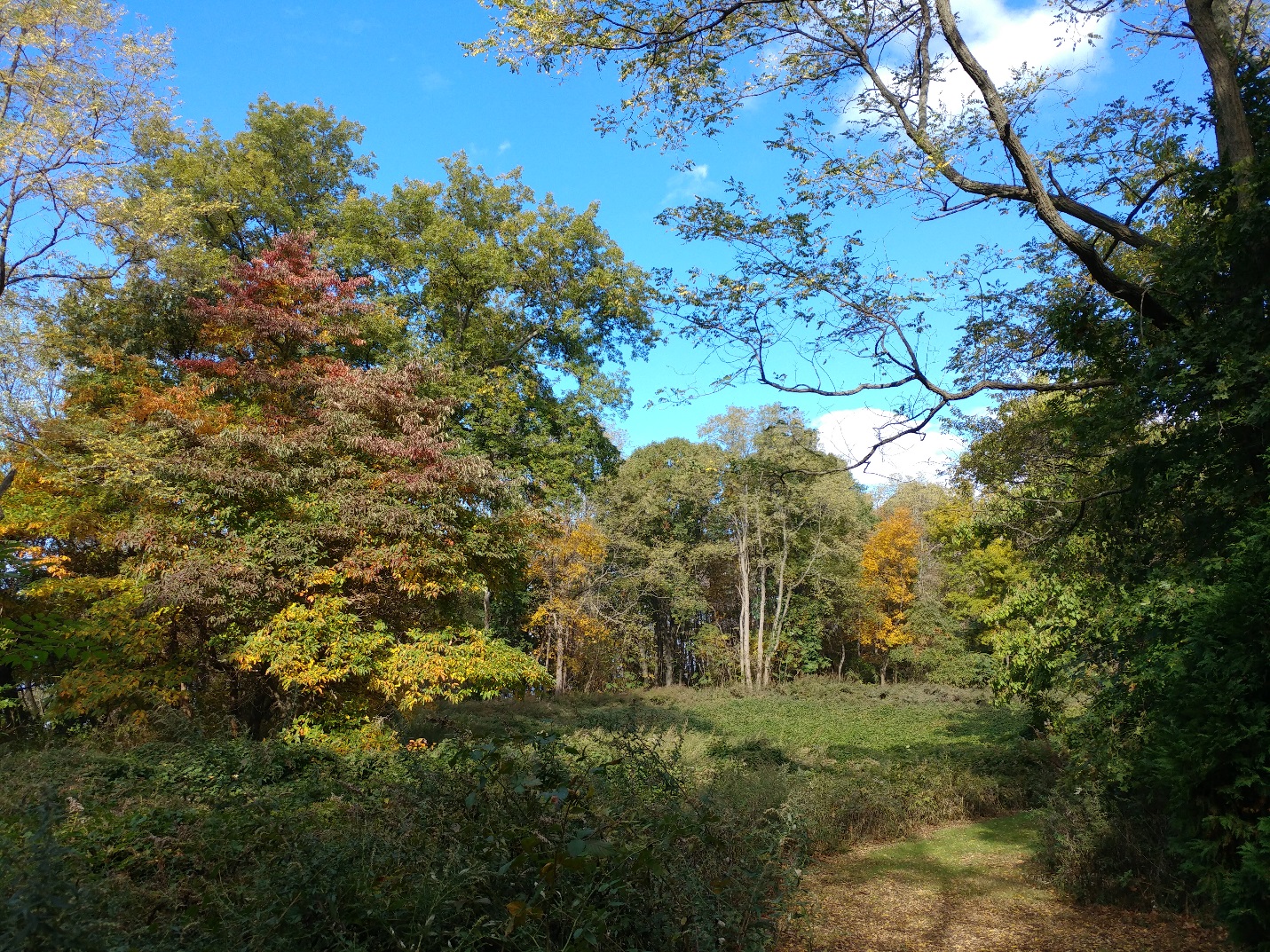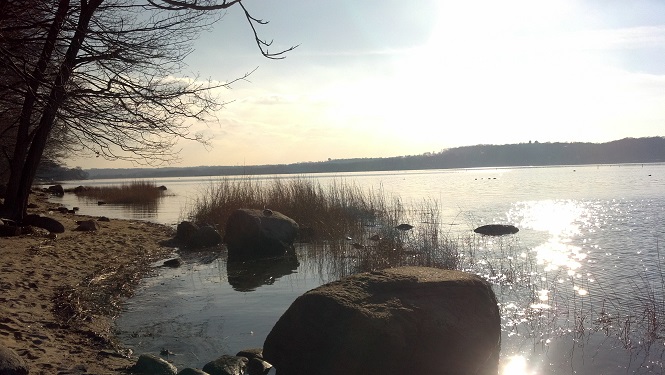Nature Preserve at Garvies Point Museum
The preserve consists of 62 acres of glacial moraine covered by forests, thickets, and meadows. There are about five miles of marked nature trails including trails for the visually impaired. Wooded areas, which exhibit various stages of succession, contain over sixty (60) species of trees as well as numerous shrubs, vines and wildflowers. High cliffs along the shoreline display erosional features such as alluvial fans, talus slopes, and slumping caused by ancient multicolored clays oozing from the bluff. Life forms typical of the north shore of Long Island are abundant along the rocky shoreline. The woods and meadows, with their varied plant life, attract more than 140 species of birds, notably, scarlet tanagers and many varieties of warblers. Woodchucks, opossums and raccoons can occasionally be seen in the woods or along a meadow's edge. A trail guide to the preserve is available at the museum.

BRIEF HISTORY OF MUSEUM & PRESERVE
As early as 2500 B.C. (over 4500 years ago) Matinecock Indians occupied a sheltered campsite on the south side of the property, adjacent to what was then a marsh. This was a small seasonal site with less than 50 persons who were primarily hunters and gatherers of wild plants and shellfish. This area was included in the tract of land purchased in 1668 by Joseph Carpenter of Warwick, Rhode Island. It became part of the Garvie family estate when Dr. Thomas Garvie, a physician and founder of this prominent Long Island family, emigrated here from Scotland in 1803. To preserve the unique collection of natural geological features of the property from development, the land was acquired by Nassau County in 1963. The Museum, which opened on July 4, 1967 specializes in New York State and Long Island geology and Native American culture and archaeology with an interactive "woodland village" with activities depicting Native American life-ways. The Preserve consists of 62 acres of glacial moraine covered by forests, thickets, a meadow and two ponds, with a rocky shoreline along the east side of Hempstead Harbor.
INTRODUCTION
The preserve supports woodland communities of differing ages and composition. Their development is related to prior land use that included cattle grazing, hay harvesting, and timber cutting for lumber, firewood and fence stock.
In the early 1900s most of the preserve and surrounding land was meadow and pasture. As less open land was needed for cattle and agriculture, the area reverted to a natural wooded state, resulting in forest communities of varying ages.
In addition to the fields, there were three small stands of timber and isolated trees along fencerows. The spreading form and larger size of the open-grown fencerow trees are still evident today. Remnants of the old timber stands in the preserve indicate they were mature, possibly climax (self-perpetuating) communities with oaks, chestnut, tulip tree, beech and black birch as the dominant trees.
I. MEADOW
The plants of this meadow community illustrate "old-field" succession. Succession is the predictable replacement of one plant community by another with each community preparing or modifying the site for the next. Eventually, a self-perpetuating assemblage of plants becomes established; the climax community. The climax community can be "re-started" due to trees blown down by storms, lightning strikes, or clearing. The meadow is currently maintained as a field by seasonal mowing.

Meadow in May
Old field succession began here in 1966 when Kentucky bluegrass was planted. The center and southwest edge of the meadow illustrate the first stage with beard grass and herbs such as goldenrod, dandelion, mugwort, ragweed, sheep sorrel, and wild lettuce outcompeting the bluegrass for light, nutrients, and growing space. This community of plants provides abundant food and cover for wildlife. The sparrows, robins, cardinals, rabbits, mice, foxes and other birds and mammals attracted by the diversity of food help bring about the next successional stage.
 Meadow in August
Meadow in August
In the second stage, blackberries, wineberries, dewberries and occasional small trees like black cherry, black locust, and sassafras begin to grow among the herbs and grasses. Many originate from seeds transported in animal droppings. These new plants develop rapidly in full sunlight, shading out the shorter herbs and grasses. Eventually, the small trees grow above the berry bushes and shade these sun-loving plants causing them to die back. This can be seen at the south end of the meadow where small sassafras trees have formed a closed canopy to begin the next stage of succession - the pioneer woodland.

Same meadow in November
II. PIONEER/TRANSITIONAL WOODLAND

This area currently supports a fairly young, uneven-aged stand of mixed hardwoods. The over story (tall trees) consists of oaks, hickories, black cherry, black locust, tulip tree, sassafras, sycamore, ailanthus, maples, black walnut, beech and black birch. The understory (small trees) contains black cherry, sassafras, dogwood, hickories, Hercules's-club, oaks, red maple and spicebush.
A large area of the preserve has a dense understory of brambles, native greenbrier, and nonnative multiflora rose. Rabbits, red fox, squirrels, raccoons, mice, and deer, along with cardinals, orioles, catbirds, sparrows, flycatchers, warblers, jays, tanagers and a host of other migrant and resident birds find food, shelter and protected nesting sites within this woodland. Some areas, where large over story trees have fallen due to wind throw or age, create openings in the canopy which enables sun-loving plants and trees, native and non-native to quickly develop.
III. OLD GROWTH HARDWOODS

This stand of uneven-aged trees is a remnant of a once larger woods reduced in size by housing development. Along the bluffs, American beech, normally a tree of more northerly climate, dominates the area. It is better able to withstand the harsh conditions of this northwesterly exposure than any of our more common native trees. Beech trees create dense shade, enabling an open understory of young beech, birch, and spicebush. The oaks, hickories and birch, which generally occupy the more sheltered portions of this stand, make up the climax woodland community on Long Island's North Shore. Spring ephemerals and early woodland wildflowers are commonly found in this part of the preserve.

IV. SPRING-FED AND VERNAL PONDS
On the north side of the preserve, a small pond is fed by underground springs emptying into the harbor. This pond is teeming with bull frogs, green frogs, water chestnut, and duck weed. On the south side a larger "vernal" pond, so-called because spring time is when it is most full from snowmelt and spring rain. It is fed only by precipitation, so during dry summers you may find it dry! This pond attracts many migratory and resident birds, water birds, turtles, frogs, raccoon and fox.
V. SHORELINE

The rocky beach and prominent cliffs exhibit many interesting marine and
geological features.At low tide, numerous tidal pools abound with marine
organisms, such as algae, small fishes, crabs, snails and smooth mussels. Tall
stands of cordgrass (Spartina alterniflora) dot the shore, providing cover for other
shallow water animals such as ribbed mussel and horseshoe crab. Check for native
seaside plants in summer including sea lavender and seaside goldenrod.
70 million year old clays from the Cretaceous Period are being squeezed from
beneath the cliffs by the weight of the overlying sand. This occurs especially after
heavy rain causes sections of the cliff to slump. (Notice the small terraces at
various elevations as you walk down the beach trail). Ironstone concretions ("Indian
paint pots"), red mudstone, fossil-bearing sandstone, lignite (immature coal), and
iron pyrite ("fool's gold") are found in the clay. Glacial deposits occur near the cliff
top and are the source of the many boulders scattered along the beach. Waves
erode the clay and sand, and the boulders slide down to the water's edge where
they resist further movement.
Read more about the shoreline here

